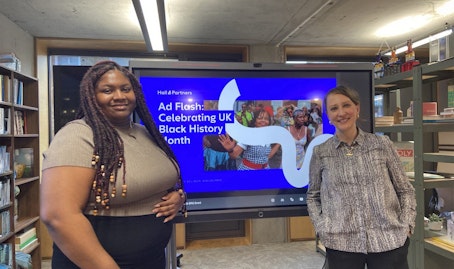Perspectives

Rihanna’s new line of make-up, Fenty Beauty, launched this month, blowing the cobwebs off what one might have assumed to be an over-saturated category. While I think it’s important for brands to remember that they are not Rihanna, and probably never will be, watching this masterclass of a brand launch reveals some important lessons.
1. Play where you have permission
“We can’t wait to see what magical products [Rihanna] comes up with – and when it happens, she won’t even have to ask. You can have all our money Rihanna.”
This quote from an article in Refinery29 was written in 2015 – a full two years before the range would be launched. In fact, at that point all that existed was a patent, spotted by some beady-eyed fans.
This is the power of Rihanna. In a world increasingly dominated by celebrity brands, but where simultaneously the meaning of celebrity is being diluted, she has absolute permission to do anything. Music, then perfume, then fashion – and now make-up.
For any brand wanting to learn from Rihanna’s success, this is important. ‘Permission’ is a term that’s being increasingly bandied about as brands want to be more political, and as celebrities want to expand their reach. At the moment, Rihanna is the gold standard. Her fans’ trust is absolute, but she also knows exactly which directions to exercise it, and how to make it her own. While not every brand can be Rihanna, they can determine their own identity. And once they understand that, it will be easier to understand where else they have permission to play.
2. Be genuine about diversity
The last couple of months have been an interesting time for diversity in the fashion and make-up industries. On the one hand, we have the L’Oreal fiasco where the brand fired the trans model and activist Munroe Bergdorf two days after they’d hired her. And, on the other, we have Fenty Beauty. Whatever you might think about L’Oreal’s decision (and, for the record, I think they’re in the wrong), Fenty Beauty is very much an example of how to get it right.
Rihanna’s campaign launch video contained a genuinely diverse range of models of different ethnicities, backgrounds and styles, and she followed this up by immediately launching her entire range of 40 foundation shades. Not only is this an unprecedented amount (the most extensive ranges top off at 33), it’s also deeply unusual for a mainstream brand to launch with the full range of colours. Consumers with darker skin are used to being told to wait for products, which may or may not end up being a good match for their skin tone. Rihanna instead managed to include and celebrate all of her customers and fans, whatever their ethnicity. (In fact, the range has also been celebrated for including those with albinism.)
“In every product I was like, ‘There needs to be something for a dark-skinned girl; there needs to be something for a really pale girl; there needs to be something in-between’. There are red undertones, green undertones, blue undertones, pink undertones, yellow undertones — you never know, so you want people to appreciate the product and not feel like, ‘Oh, that’s cute, but it only looks good on her’."
- Rihanna, at the launch
The fact that the darker colours immediately sold out has been a wake-up call to the fashion industry as to who their consumers actually are. (And the speed with which other brands expanded their ranges in the aftermath belies any earlier claims that it was either too difficult or expensive to do so.)
It’s undoubtedly a good thing that make-up brands are at last acknowledging that their customers may not be as rigidly defined as they had thought, and that they have a responsibility to be more inclusive in their product lines. While there can be a lot of fear around the right way to approach these sorts of issues, Rihanna has shown us that brands have a responsibility to tackle them head on, as well as providing a great template for where to start.
3. Innovation must be more than aesthetics, while still including aesthetics
Of course, without a good product a lot of the above would be moot. Even Rihanna has only barely been forgiven for the Fenty x Puma high-heeled flip-flops at this year’s London Fashion Week. Luckily, the years she spent developing her make-up range have paid off. Not only is the make-up good quality; she also knows where to innovate broadly (i.e. in the range of foundations), and where to narrow it down – e.g. creating lip balm, primer and blotters which work on all skin tones. And, as if that wasn’t enough, she’s even included a practical function in her range of Match Stix, magnetic tubes which can clip together so that you can easily find them in your bag.
Another practical plus is that the make-up looks gorgeous when photographed – and this is a range that was just made to be instagrammed. Brands do need to start thinking about this as a practical function – sure, people want products that work, but they also want ones that look good. The magnetic function allows people to feel like they’re personalising the visual story they create, while simultaneously becoming part of the Fenty narrative.
Beautiful and clever packaging in this case doesn’t signal smoke and mirrors for a mediocre product, but rather that the care and thought that went into its development covered all areas. It’s no coincidence that the focus is also on the performative elements, such as bright gold highlighters – Fenty make-up is made to be photographed… and made to be photographed in.








